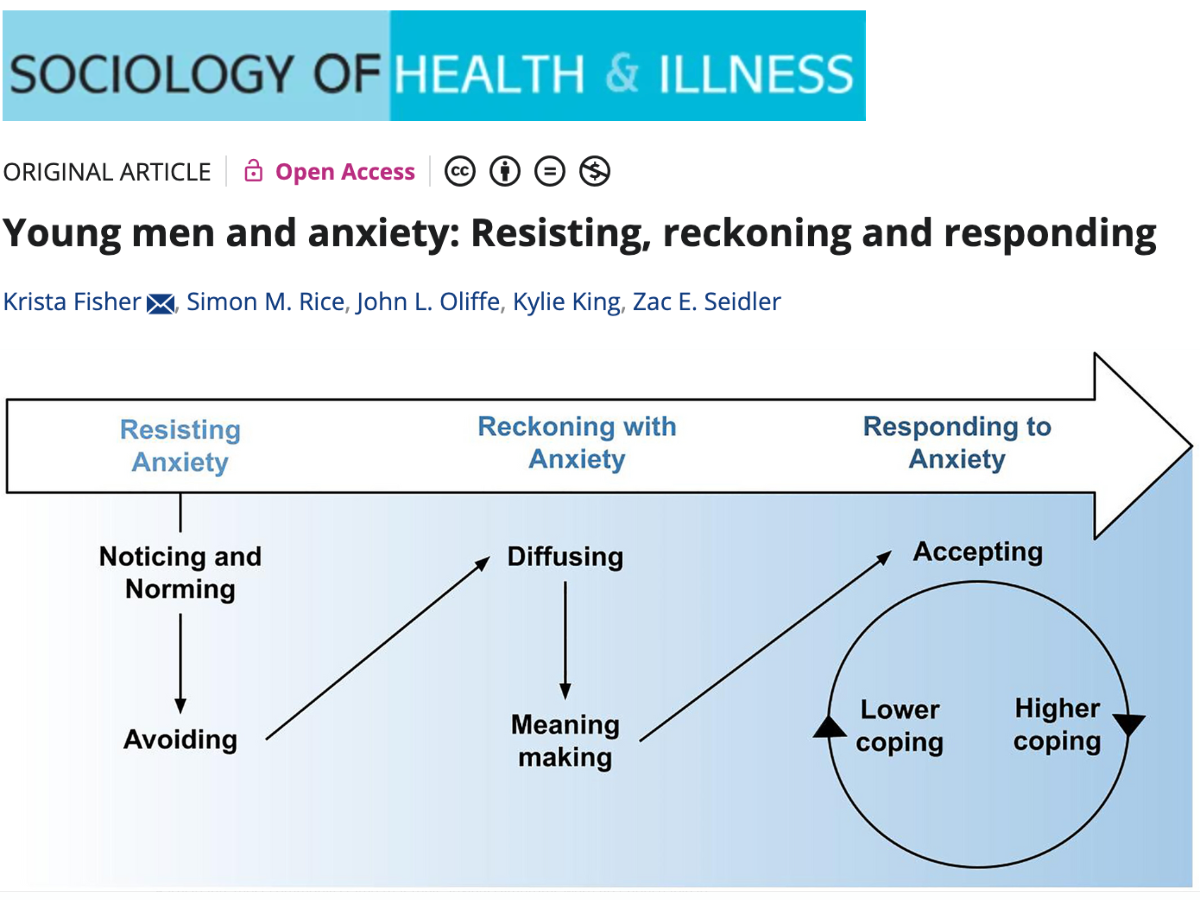
Anxiety disorders are the most commonly diagnosed mental illness among men worldwide. While most existing research on anxiety largely predisposes underlying factors to genetic vulnerabilities, evolutionary factors and physiological reactivity differences between men and women, these factors did not consider the socially constructed nature of anxiety. In addition, because cultural representations of anxiety have been traditionally gendered, existing clinical diagnostic guidelines often neglect men’s experiences of anxiety due to how they’re being juxtaposed with traditional masculine norms. As a result, this impact men’s willingness to seek help, and their overall mental health outcomes. Considering all these, this study aimed to explore the process in which young men experience anxiety and, more specifically, outline the course of young men’s anxiety over time.
Using constructivist grounded theory, participants were recruited through the community and via clinical liaison across two headspace early intervention centers in the Melbourne region, and included both young men who had and had not sought help through mental health services. Eligibility criteria included i) self-identifying as a male, ii) aged 15-25 years, iii) signed informed consent form (including parental consent for participants under 18 years old), and iv) able to converse in English, and v) a score of >=6 on the Overall Anxiety Severity and Impairment Scale (OASIS), indicating moderate anxiety. In total, 25 men participated in the study, where 25 individual interviews and 3 member-checking interviews were conducted.
Three distinct themes emerged - firstly, resisting anxiety. Here, young men noticed and normed their anxiety symptoms which manifested in different situations including during class presentations and meeting new people. However, they worked to avoid anxiety as a result of gender socialisation that influenced young men’s lack of understanding of anxiety symptoms, and how these symptoms contrasted traditional masculine norms such as stoicism and strength. In reckoning their anxiety, young men worked to diffuse their anxiety by recognising how their anxieties were framed by shame and uncertainty, and subsequently endeavoured to look at their past to understand where and why it had arose. Herein, they also developed labels and language as a means for making meaning of their experiences, questioning symptoms as they arose which helped familiarised themselves with what was happening. Lastly, in responding to anxiety, the powerlessness and feelings of helplessness which stemmed from the possibility of a life-long course of anxiety over which they had no control over led to young men accepting these anxiety experiences. Other young men also described making an intentional or conscious decision to move forward to focus on effectively managing symptoms as they arose, and to integrate anxiety as an important part of their self-identity. For the latter specifically, some young men described confronting and challenging restrictive masculine and cultural ideals that had led them to suppress their anxiety symptoms in the first place. Some young men also engaged in self-management and coping strategies including with mental health services, intimate partners, friends and family members, and sought out adaptive coping strategies to better manage symptoms in periods of heightened anxiety.
In conclusion, as the young men in this study detailed the course of their anxiety, many described starting to accept, rather than avoid their anxiety symptoms. This acceptance included accepting the volatile and sometimes chronic nature of symptoms, renegotiating and reframing parts of their masculine identity to encompass anxious experiences and becoming more open to, and accepting of, intermittent periods of professional and peer-based support. That said, practitioners working with young men with anxiety should emphasise gender-sensitive acceptance-based practices as an effective means for improving men’s understanding of symptoms and capacity to manage heightened episodes of anxiety.